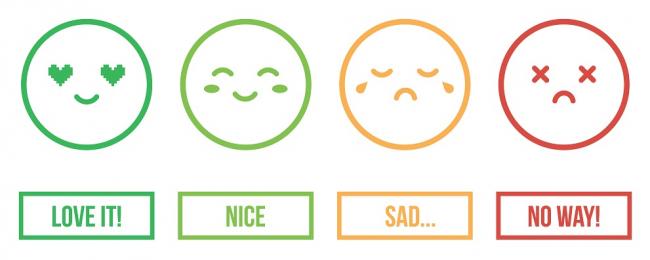Topics
Customer Service Means Never Saying Never (But If You Must, Say It In A Different Way)

Customer service training is more than teaching a set of rules. Having strict rules (or policies) leads to employees who are focused on not “breaking the rules,” and can lead them to utter the dreaded phrase, “We can’t do that.” Sometimes it may be true that you can’t fulfill a customer’s request – it may be illegal, impossible or completely unreasonable. But you can still try to maintain a positive attitude, maybe put a different spin on it to avoid a flat-out “no.”
So, how do you do that? For most any situation, there are things you can say instead of “We can’t do that.” Sometimes you can suggest another option. Imagine a customer requested pesto sauce, and the restaurant happened to be out of it – or never even had it on the menu at all. Rather than, “We can’t do that,” the employee could say, “We’re out of pesto sauce. I’m sorry about that, but you may love our marinara. Would you like to try that today?” Doesn’t that sound a lot better?
There are some key elements to training employees to have a “can-do” customer service approach.
- Hire the right people for the job. A customer service culture starts with the people. There are many good people out there, but some of them are not suited for a truly customer-focused organization. When hiring, consider qualities such as empathy, friendliness, patience and problem-solving skills. These and other personality traits form the foundation on which good customer service is built.
- Provide ongoing training. Train your people during orientation, and don’t stop there. The best companies have ongoing training to keep customer service front and center and continually remind employees of the importance of providing a good experience for the customer – even the difficult ones.
- Empower your employees. You’ve hired the right people and given them the tools to provide good customer service, now let them know that it is their responsibility and their right to deliver good service in their way. Of course, there are guidelines (you provided those in the training), but remember, don’t overburden them with rules and policies that force them to say, “We can’t do that.” Let them use their problem-solving skills to make the customer happy.
With all this talk of staying positive and trying to avoid saying “no” to the customer, you might wonder, is it true that the customer is always right? If you’ve followed my work, you know that I believe the customer is not always right. However, there is an old customer service saying to remember:
You’re not trying to win an argument. You’re trying to win a customer.
You really can’t win an argument with a customer. If you “win,” it means the customer has “lost,” and you could end up losing the customer. The best way to let the customer win an argument is not to get in an argument at all. What you can do is be respectful, let the customer keep his or her dignity. You can agree to disagree. You can work toward a solution. In short, you win the customer, not the argument.
Your customer service training will include elements that are specific to your company and your mission and vision, but remember these basics. Teach your people to listen to the customer, understand their frustrations and try to come up with a mutually agreeable solution. If they can master this, they will be on the “positive” track to creating loyal customers.
Read more on Evolution of the Customer Service Agent and see what our experts think about today and tomorrows customer service needs.
Shep Hyken is a customer service expert, keynote speaker and New York Times bestselling business author. For information visit www.hyken.com. For information on The Customer Focus™ customer service training programs go to www.thecustomerfocus.com. Follow on Twitter: @Hyken

